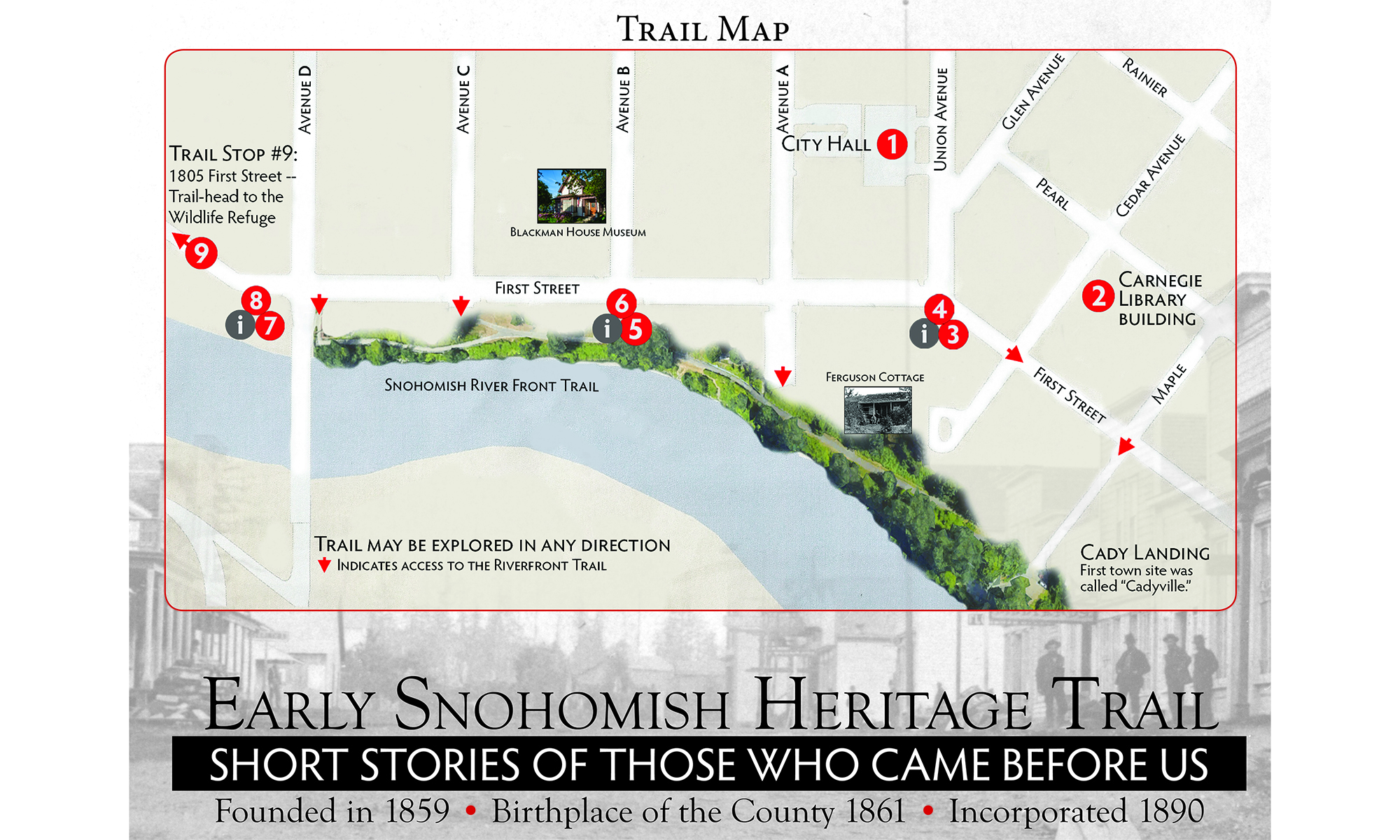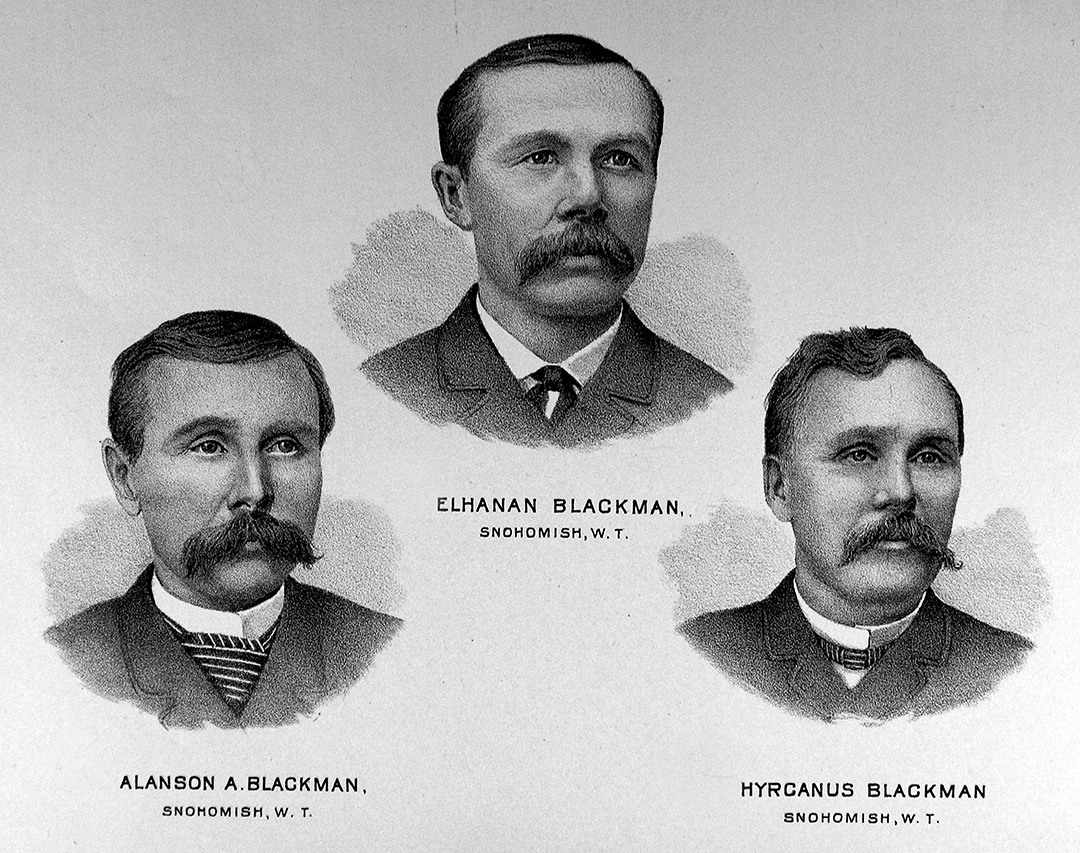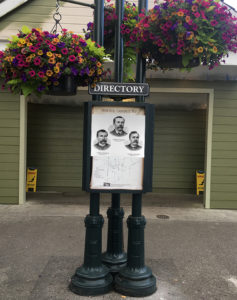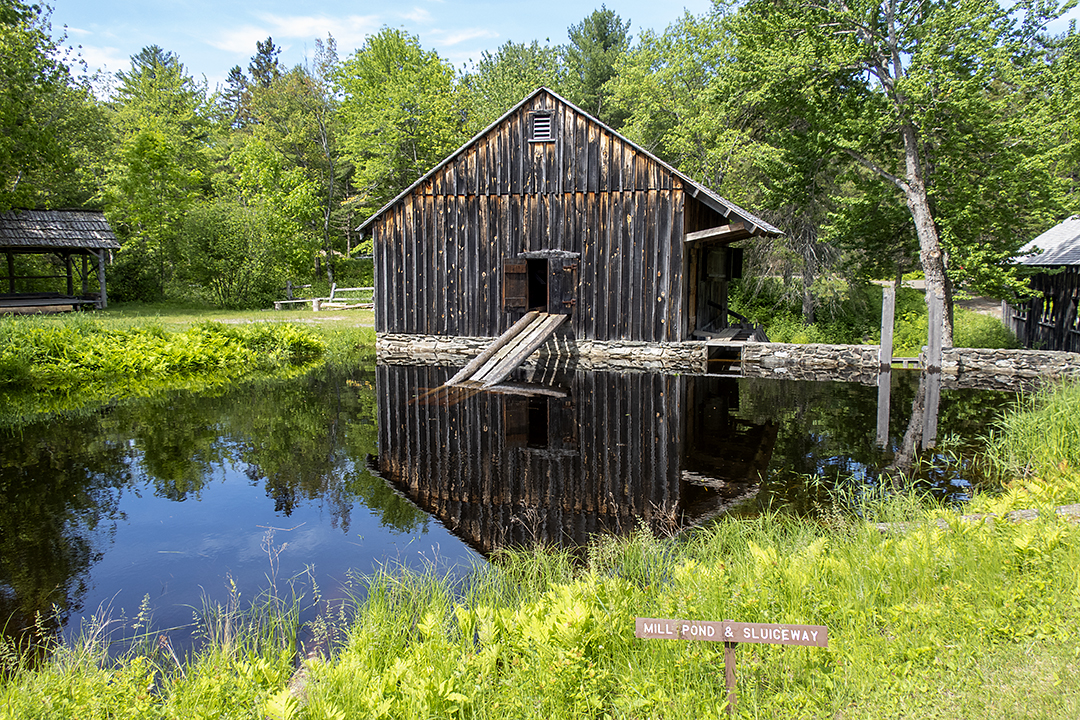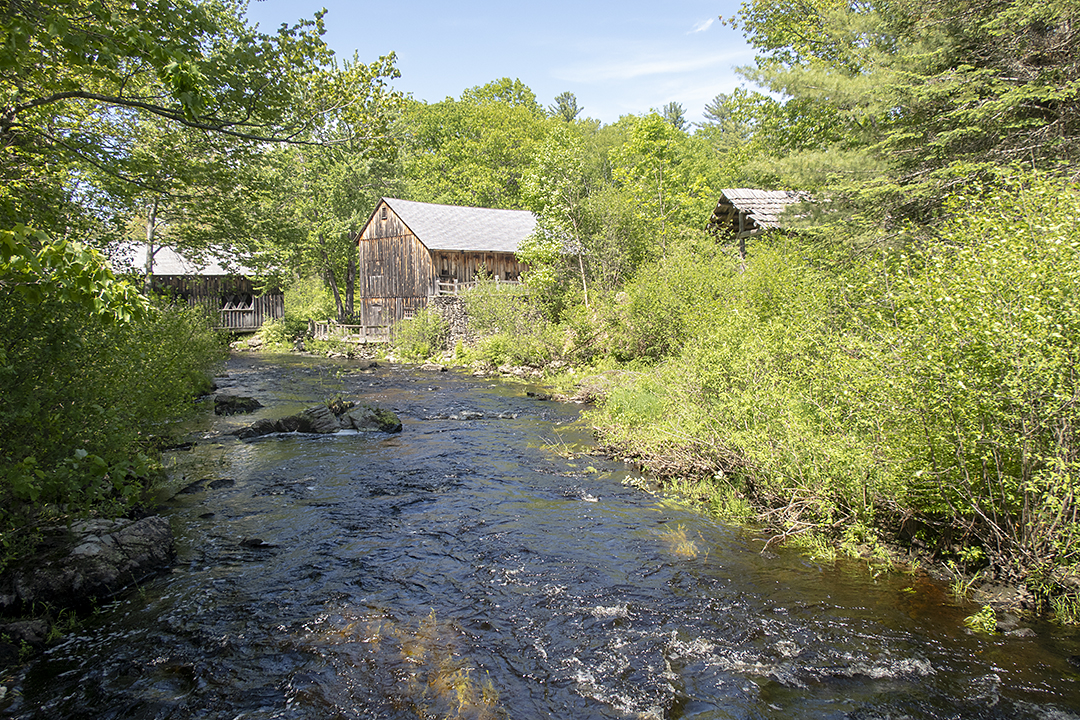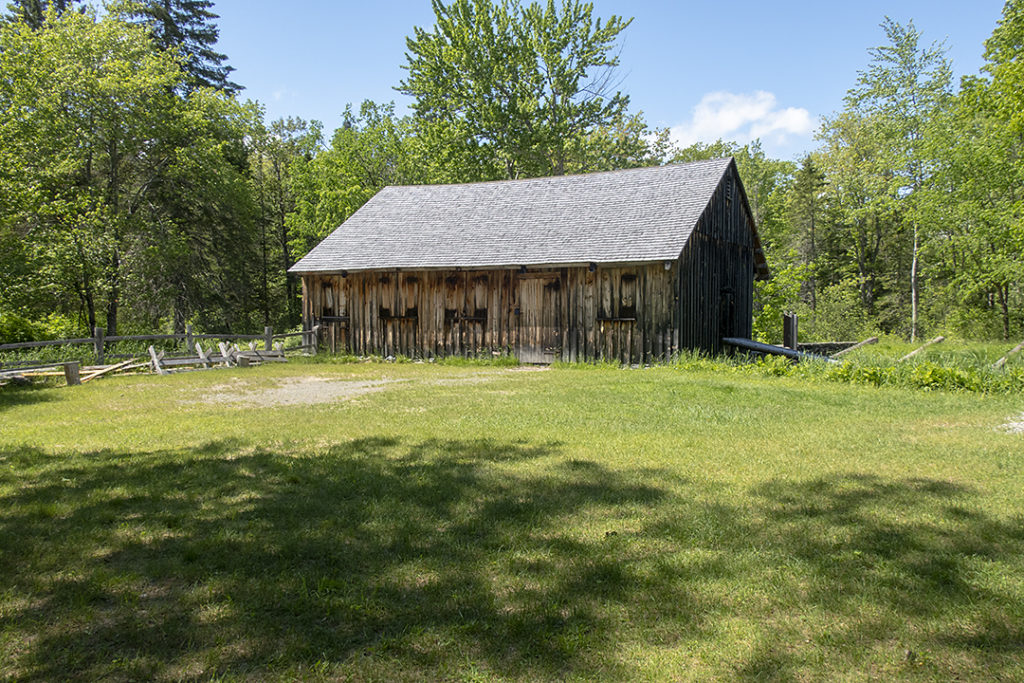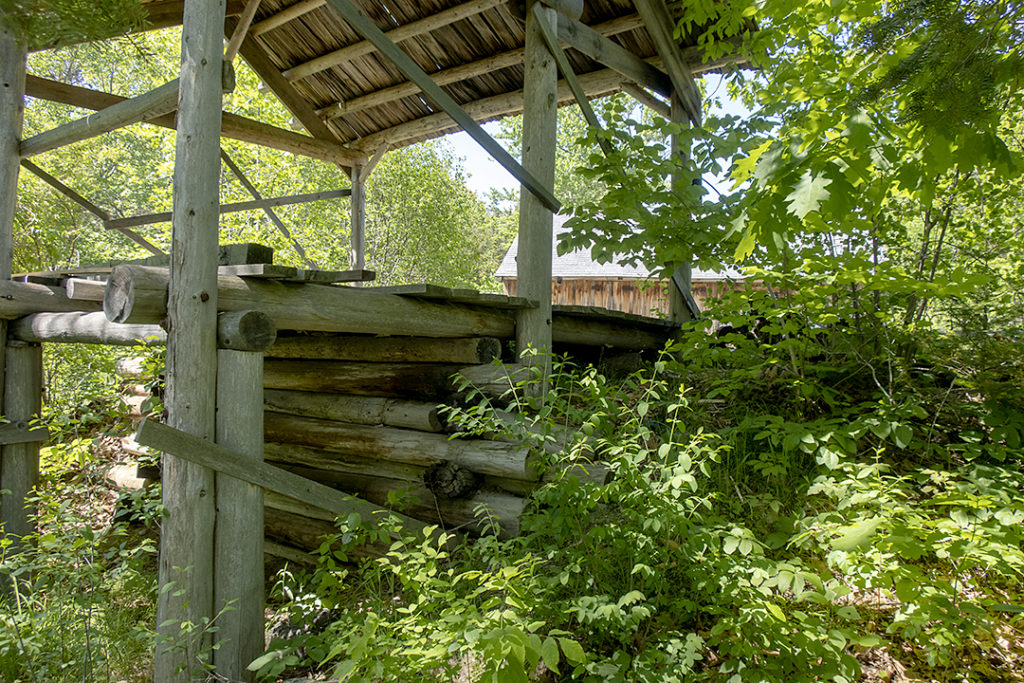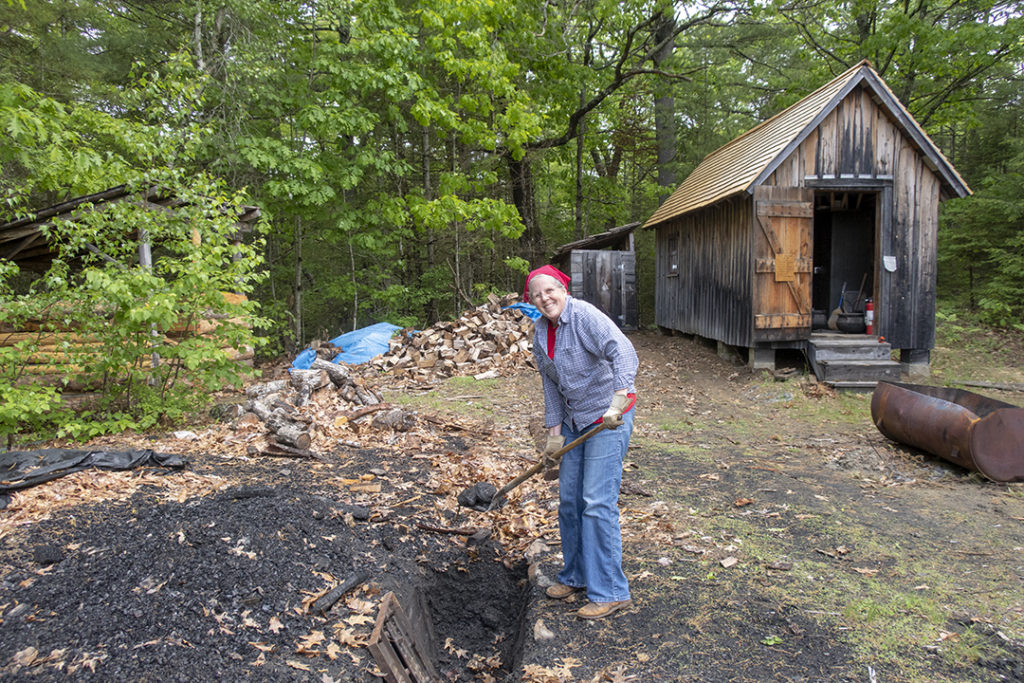Alanson, Elhanan, and Hyrcanus were all born in a town named to honor their grandfather, Bradley Blackman. He assumed Leonard’s Mill on Nicolas Stream in 1828, and for the next 50 years, the family milling operation grew so successful that even the stream was renamed after the Blackman operation. It’s Blackman Stream to this day, though the mill was rebuilt in the 1980s as the featured interpretative activity of the Maine Forest and Logging Museum.
Act Two, Scene i of our proposed “Birthplace of the County Heritage Trail” will use the cluster of our former wayfinder display cases at Avenue B and First Street, located in front of the public restroom.
Evidently, by the 1870s the Blackman Mill was failing financially as all three brothers with their wives and one babe-in-arms migrated to the Pacific Northwest arriving in 1872 at Port Gamble on the Kitsap Peninsula, Washington Territory. There, a bustling logging operation was underway that was established in the mid-1800s by three men from Maine.
No record has been found that would tell us why all three brothers left Port Gamble for Snohomish. Named after the river, the recently platted settlement of a dozen blocks was located 12 miles upriver from Port Gardner, the future site of Everett.
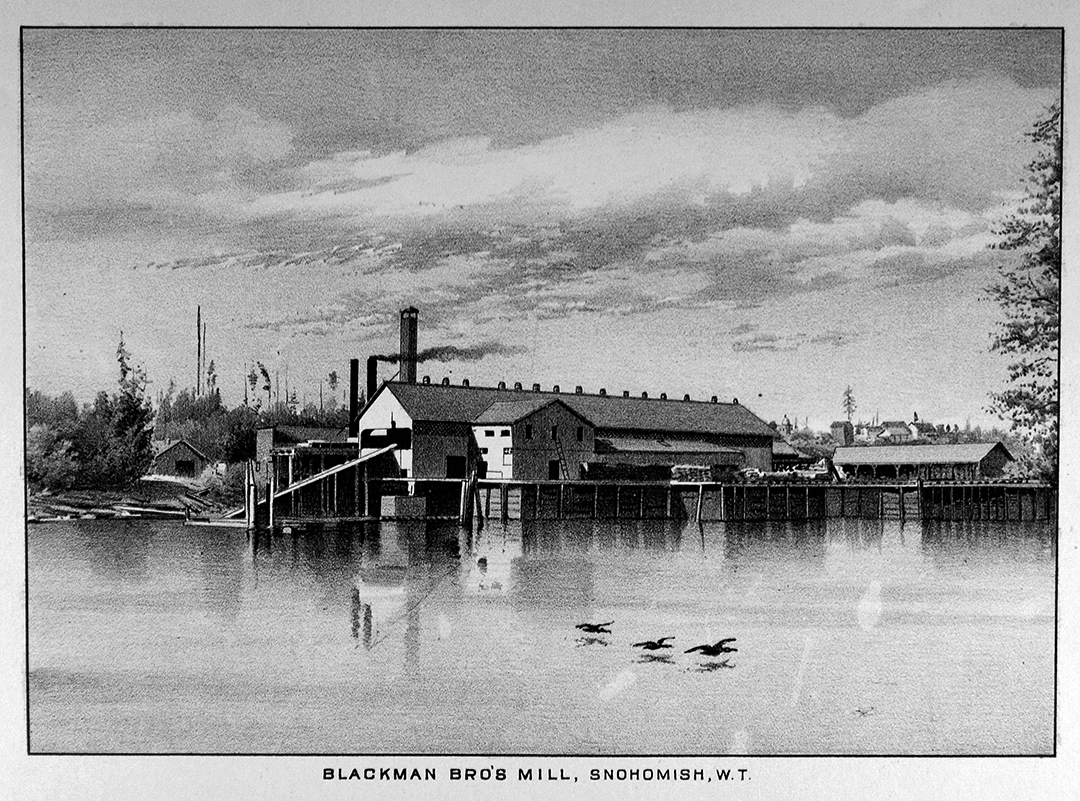
Courtesy Northwest Room, Everett Public Library.
All three brothers built homes on Avenue B with the first milled lumber from the local Ferguson-Morgan Mill. Established as the Blackman Bros., they began logging operations on the local lake, Stillaguamish, called Blackman Lake today; and within four years, their first mill on the Snohomish River was in operation, employing ten men.
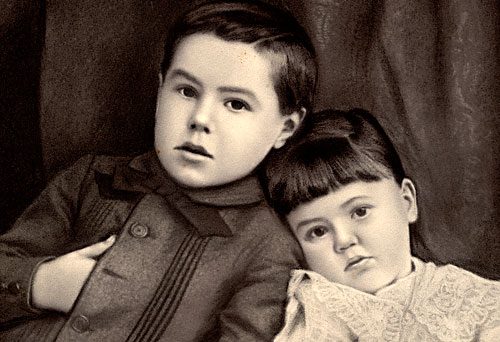
Crayon portrait of Clifford and Eucice, circa 1890.
Blackman House Museum exhibit.
In 1884, Clifford was born to Hyrcanus and Ella followed by a daughter, Eunice, three years later. Hyrcanus considered the business brains of the company, opened a general store at the intersection of First Street and Avenue C; then in 1888, he built the four-star Hotel Penobscot, in anticipation of receiving guests arriving in town by rail.
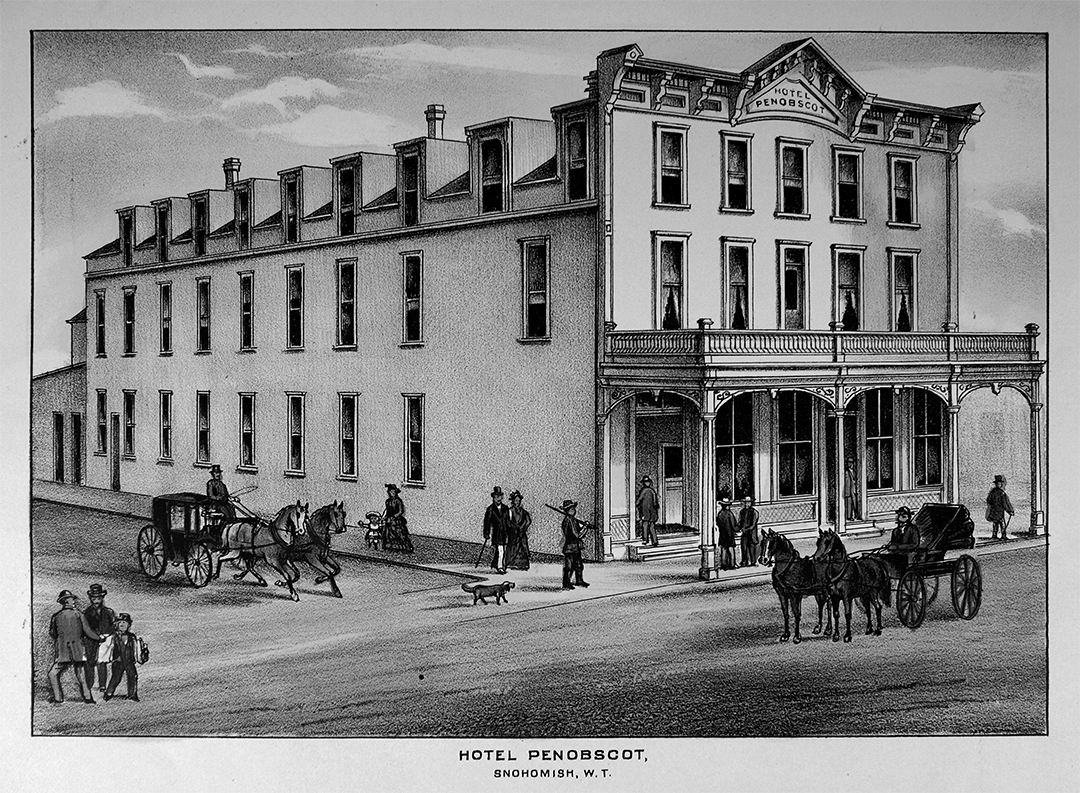
Courtesy Northwest Room, Everett Public Library.
The arrival of the railroad was a boom to the Blackman’s mill operation where it was producing kiln-dried red cedar shakes by the boxcar load intended for the east coast market. The Brothers arrived in town broke but with the invention of various logging and milling operations, sheer determination and keen business sense, Blackman Bros. was the economic engine of early Snohomish.
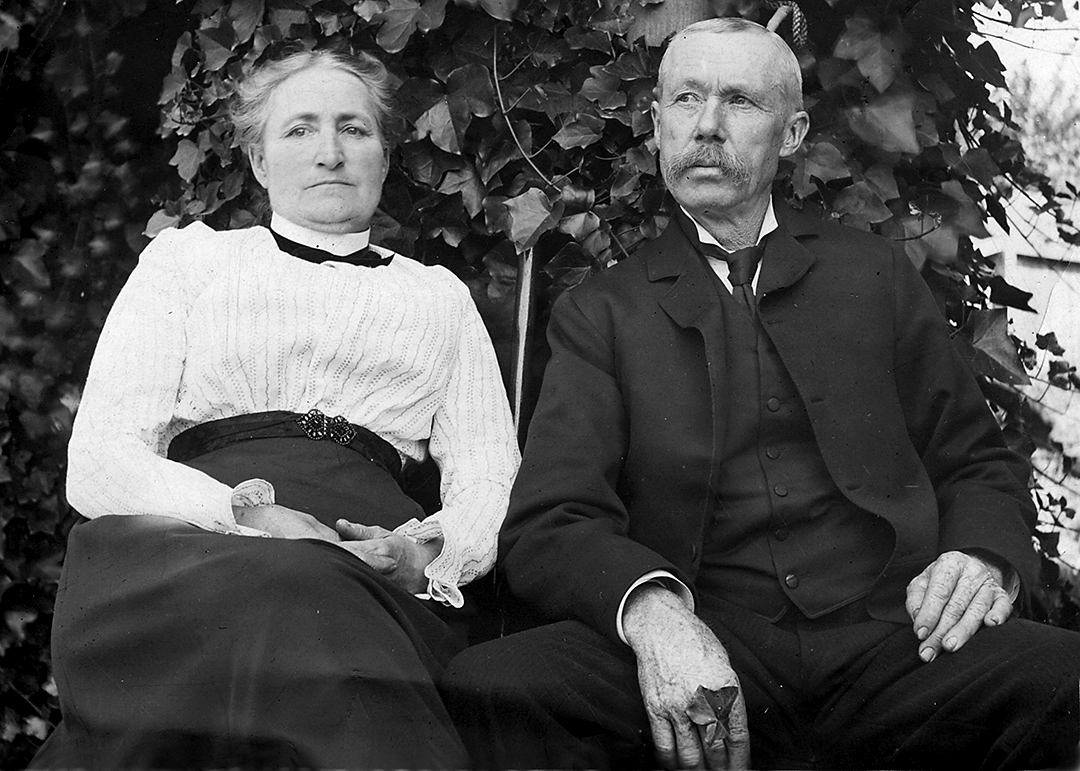
Ella and Hyrcanus Blackman photographed by Edith Blackman at the beach cabin, Clinton, WA circa 1900.
Snohomish Historical Society.
Based on Hycranus’s reputation as a business leader and as a legislator in Olympia for one season, he was elected Mayor of Incorporated Snohomish in 1890, for which his name still carries the title of “First Mayor,” though founder E. C. Ferguson won his seat back in the next regular election and served as mayor until his death in 1911.
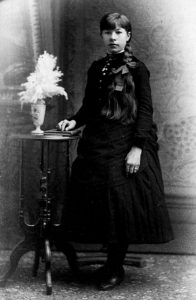 Another measure of growth in early Snohomish was the blossoming of Edith Blackman, the babe-in-arms who made the journey west with her parents Elhanan and Frances, who was now a young adult. There is evidence that she made the portrait of Ella and Hyrcanus, discovered in her album with the note on the back “For Ella and Family, Edith.”
Another measure of growth in early Snohomish was the blossoming of Edith Blackman, the babe-in-arms who made the journey west with her parents Elhanan and Frances, who was now a young adult. There is evidence that she made the portrait of Ella and Hyrcanus, discovered in her album with the note on the back “For Ella and Family, Edith.”
Undated photograph of Edith Blackman courtesy Snohomish Historical Society.
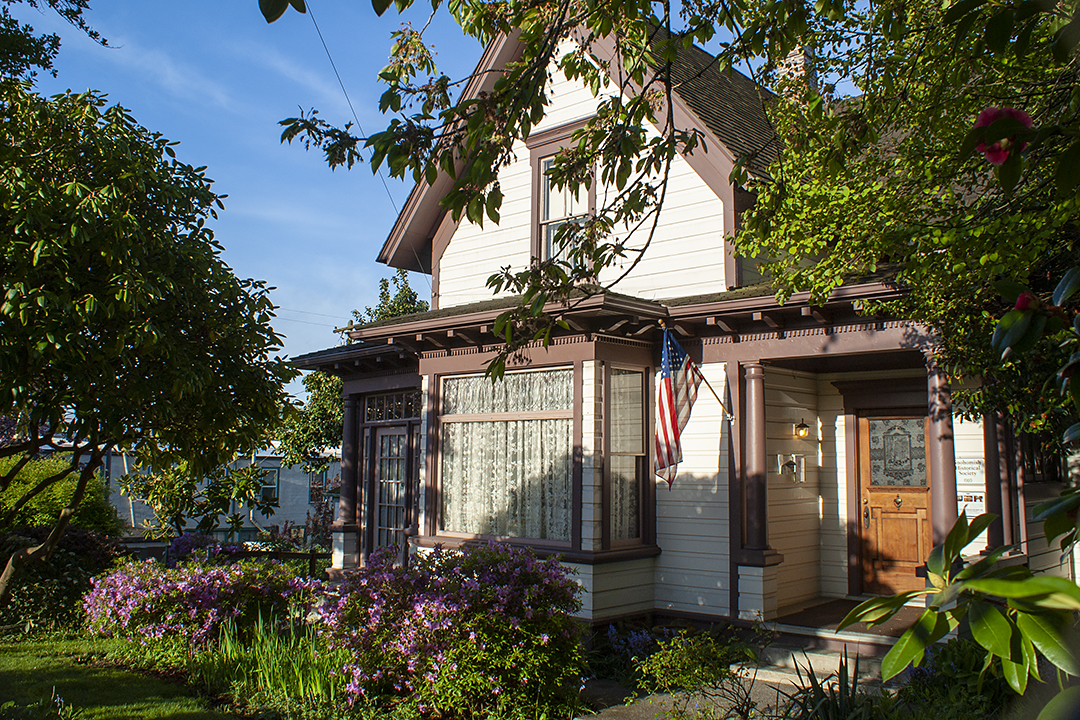
Blackman House Museum, 118 Avenue B, circa 2008.
Hyrcanus died in the home he built on June 1, 1921, followed by Ella in 1927. Their daughter Eunice and her husband William Ford lived in the house until the late 1960s when it was known as the Ford House. In 1969, it was sold to the Snohomish Historical Society and is known today as the Blackman House Museum.
. . .
